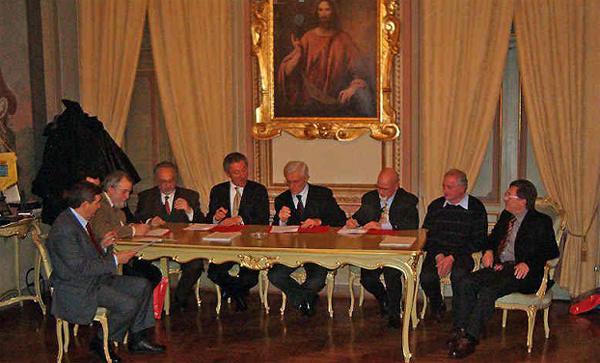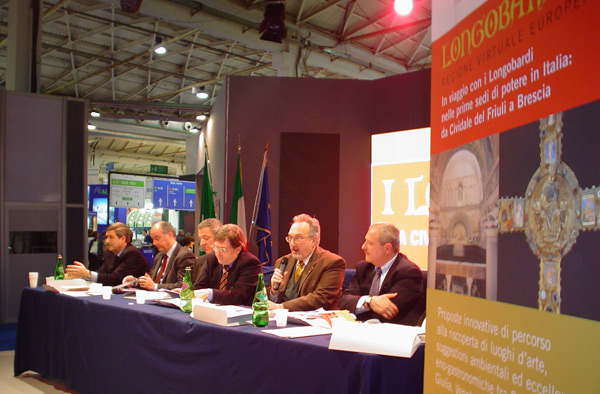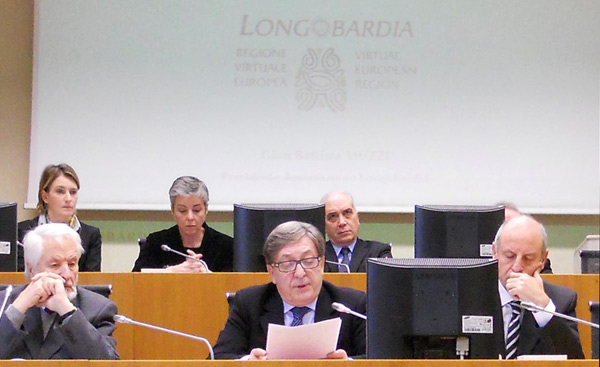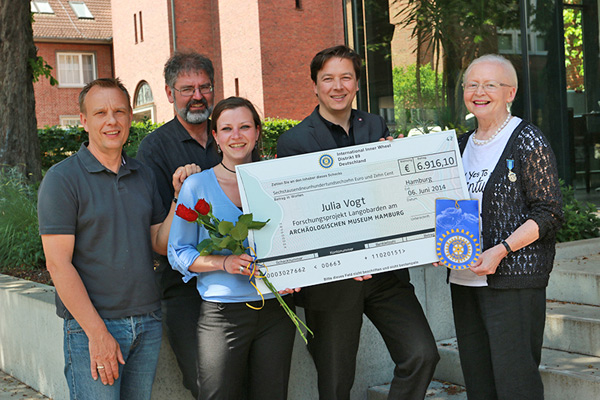Longobardia Association
The Longobardia Association – which currently comprises institutions and associations in Italy, Germany and Slovenia – is the non-profit organisation that has taken on the task of creating the programme for establishing the cultural itinerary “Longobard Ways across Europe. For this purpose, the Association has been formally recognised by the Institut Européen des Itinéraires Culturels in Luxembourg, operative branch of the Council of Europe, as the OFFICIAL PROPOSER OF THE APPLICATION for inclusion in the specific list of European Cultural Itineraries. The Board of Directors was renewed during the Assembly held in Monza on 3 November 2017.
The association’s activity began in 2003 with the start of relations between Third-sector Associations in Brescia and Cividale aimed at finding possibilities of collaboration for developing the knowledge of their common Longobard heritage. The Associations thus stimulated and obtained the support of the respective Municipal Administrations.

On 24 February 2005, a first Letter of Intent was signed in Brescia by the Mayor of Brescia, the Mayor of Cividale del Friuli, and the Chairmen of the respective Forums of the Associations for the Promotion of Social Tourism. According to this deed, a mixed Work Group was set up to identify the possibilities of reciprocal collaboration on the theme of cultural tourism inspired by the Longobards.
On 13 June 2005, in Brescia, the Work Group founded the Longobardia Association which has the primary task of drawing up a programme for the cultural and socio-economic development of the Longobard Territories, with a view to establishing a geocultural corridor referring to the Virtual European Region called “Longobardia”.
On 3 December 2005, in Cividale, the Longobardia Association presented to the Mayors of Cividale and Brescia the programme outlining the creation of the Longobard Itinerary, from the Seas of the North to the Ionian Seas. At the same time, a Memorandum of Intent was signed between the municipal administrations of Brescia and Cividale, the respective Forums and the Longobardia Association for the application of the planned programme.

In January 2006, at the BIT in Milan, the Longobardia Association presented the project for the Longobard Cultural Itinerary and the Virtual European Region, in the presence of the Mayors of Cividale and Brescia, the Regional Councillor for Tourism of Lombardy, the representative of the Region of Friuli Venezia Giulia, Banca FriulAdria, and the World Chairman of the OITS (International Social Tourism Organisation).
In 2007 the project for the European Longobard Itinerary was included in the Objectives and Actions of the Management Plan for UNESCO that was being prepared (under the leadership of Cividale) for the UNESCO candidacy of the serial site comprising the “unique and exceptional, intact and authentic” monuments identified by the MiBAC in the territories of the Municipalities of Cividale, Brescia, Castelseprio-Gornate Olona, Spoleto, Campello sul Clitunno, Benevento and Monte Sant’Angelo.
On 9 January 2008, the Agreement was signed in Rome between MiBAC and the promotors of the UNESCO candidacy of the serial site entitled “The Longobards in Italy. The centres of power and worship (568-774 AD)”.
On 5 June 2009 the Italia Langobardorum Association was founded in Spoleto, consisting of the Municipalities where there are artistic and monumental sites presented as UNESCO candidates. The bid for UNESCO candidacy was slowed down following requests for further information concerning the criteria for identifying the candidate assets and for historical comparison, suggested by ICOMOS, the UNESCO inspection body.
2010 – The candidacy was presented again in 2010 with the final title “The Longobards in Italy. The centres of power (568-774 AD)” and without any change to the European Longobard Itinerary.
2011 – UNESCO approved the candidacy, inserting the site-serial of the World Heritage List and proclaiming the Lombard culture at its peak as <primary root of the European Culture, later developed by the Carolingians>. In the UNESCO Official Application Dossier the Longobardia Association is formally recognized as having the role of establishing a "networked integrated tourism system" intended to constitute <a broader European network "Longobardia-European Virtual Region" that unites the sites of Lombard origin from Scandinavia to the Ionian Sea, following the path in the history »of the Longobard peoples>.
2012 - The Longobardia Association launched initiatives and procedures for creating the European Longobard Itinerary.
2013 - The Longobardia Association was formally recognised by the Institut Européen des Itinéraires Culturels in Luxembourg as the official proposer of the candidacy of the cultural itinerary “Longobard Ways across Europe”.

14 November – The Municipality of Monza decided to join the Longobardia Association as co-founding partner.
The Statutes of the Longobardia Association assign the role of ex-officio members to the Municipalities represented on the UNESCO serial site, and the right to represent the Italia Langobardorum Association in the Board of Governors of the Longobardia Association.
2014, 7 February – The Longobardia Association was accepted as a member of the Italia Langobardorum Association.

2014 - Giugno - Ricerca Sui Longobardi in Bassa Sassonia e il gruppo di lavoro di Amburgo
2015, 13 February – At the BIT in Milan, the Longobardia Association Municipality of Monza again proposed – in operative form – the programme for establishing the itinerary "Longobard Ways across Europe".
ANNEXED
News
-
2025 24 SeptemberTra le carte della Corona
-
2025 24 SeptemberLa religiosità dei Longobardi
-
2025 21 MarchERRATA CORRIGE CONVEGNO DONNE LONGOBARDE
